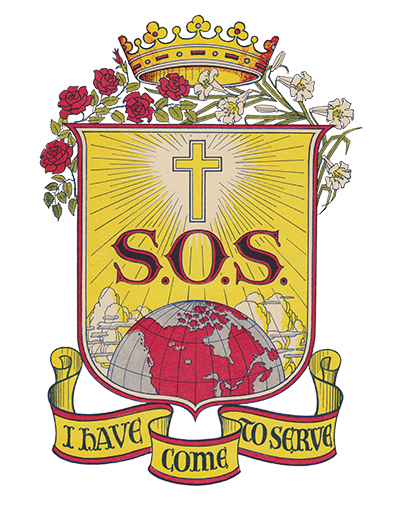

In bringing the Catholic Church to the Western Canadian settler, the constitution of the Sisters of Sisters called for the established catechism centres to provide religious instructions and sacramental preparation to children who attended public schools.
Within four years of the community’s founding, a religious correspondence school developed in the Edmonton mission of the first catechetical centre. This catechism by mail was adapted from Monsignor Victor Day’s correspondence school in Helena, Montana. A similar school was opened in Regina in 1934 and a third school in Fargo, North Dakota in 1939 and a fourth in Clarenville, Newfoundland.
Sister Madgalen Barton, the founding superior at the Regina correspondence school and co-founder of the Clarenville catechetical centre, researched a history of the community's apostolate of religious education. Entitled Fragments, Lest they be Lost: Contribution of the Sisters of Service of Canada to Religious Education, it was completed in 1997 to commemorate the community's 75th anniversary and has been abridged. Sr. Barton drew extensively from the community's archives through primary and secondary sources. Highlighting the initial 15 years, she wrote a commentary to place in context the correspondence, articles written by the Sisters from the missions in The Field at Home, the community's quarterly magazine. The history documented the Sisters’ collaboration with the Catholic Women’s League, lay volunteers, the clergy and the Catholic Church hierarchy to bring the Catholic faith to rural areas. Various projects were outlined to deepen faith among people as well as the process of converting the changes of the Second Vatican Council into catechetical lessons.
In the summer months, every available Sister was assigned to religious vacation schools, which began in the summer of 1925 and ended in 1968. Over those years, the Sisters travelled in pairs to hundreds of small communities, especially in Western Canada at the request of the dioceses. Although some of the religious instruction was held in churches and sometimes in fields, there was always fresh-air breaks of picnics, swims and sports. Usually, the two-week school ended with students receiving one of the sacraments. Often the Sisters met many of the correspondence students and their families to further cement the religious education connection.